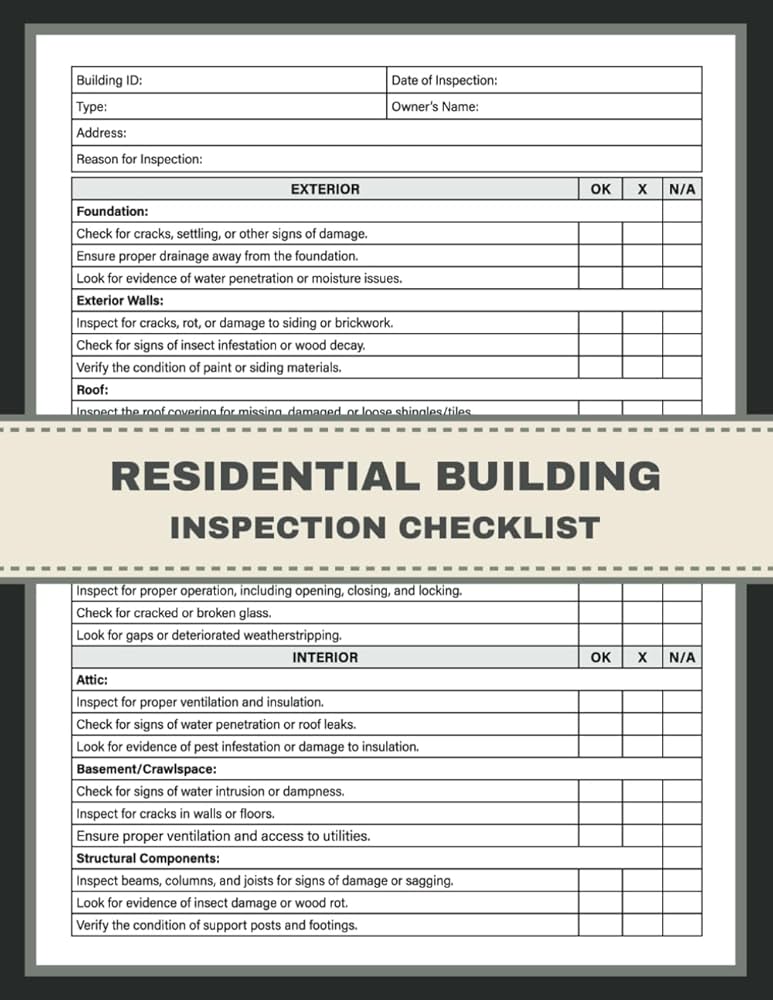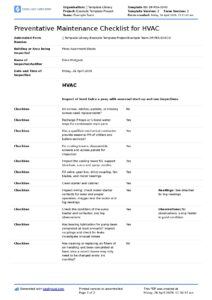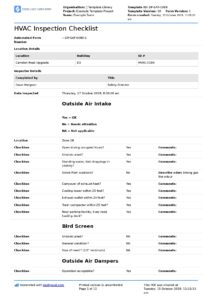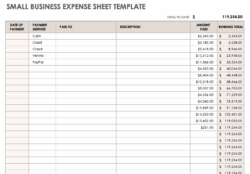Embarking on the journey of buying or selling a home is often filled with excitement, but it also comes with its share of crucial decisions. One of the most important steps in this process is a thorough home inspection. This isn’t just a casual walk-through; it’s a deep dive into the property’s condition, uncovering potential issues that could turn into major headaches or unexpected expenses down the line. It’s about providing peace of mind for buyers and transparency for sellers.
Think of the inspection report as the cornerstone of this entire process. Without a well-structured and comprehensive document, the findings from a meticulous inspection can easily get lost, misunderstood, or even overlooked. A good report translates complex technical details into understandable insights, empowering both parties to make informed decisions about the property. It’s the official record of the home’s health at a specific point in time.
This is where the magic of a standardized template comes in. Rather than reinventing the wheel for every single property, using a predefined structure ensures consistency, covers all the essential areas, and streamlines the reporting process. It helps inspectors maintain professionalism and deliver clear, actionable information, making the entire experience smoother and more reliable for everyone involved.
What Makes a Great Residential Building Inspection Report Template?
A truly effective residential building inspection report template isn’t just a checklist; it’s a comprehensive communication tool designed to convey the precise condition of a property in an easy-to-understand format. Its primary purpose is to provide an objective, detailed account of the structure, systems, and components of a home, highlighting both positive aspects and areas requiring attention or repair. It should be clear enough for a first-time homebuyer to grasp, yet detailed enough to be useful for contractors or legal professionals.
The best templates break down the property into logical, manageable sections. This systematic approach ensures that no critical area is missed during the inspection process and that the final report is organized and easy to navigate. From the moment someone opens the report, they should be able to quickly locate information about specific parts of the house without sifting through pages of unrelated content.
Key Sections to Include
- Exterior: Foundations, grading, drainage, walls, trim, windows, doors, driveways, walkways, patios, decks.
- Roofing: Roof materials, flashing, chimneys, skylights, gutters, downspouts.
- Structural Components: Visible elements of the foundation, framing, and load-bearing walls.
- Interior: Walls, ceilings, floors, windows, doors, stairs, railings, attic spaces, insulation, ventilation.
- HVAC System: Heating, ventilation, and air conditioning equipment, distribution systems, thermostats.
- Plumbing System: Water supply, distribution piping, drain, waste, vent systems, water heaters, fixtures, faucets.
- Electrical System: Service entrance, main and sub-panels, wiring, outlets, switches, light fixtures.
- Appliances: Built-in kitchen appliances (if part of the inspection scope).
- Fireplace and Chimney: Hearth, firebox, damper, visible portions of the chimney structure.
- Safety Items: Smoke detectors, carbon monoxide detectors, handrails, egress points.
Beyond just listing items, a superior template encourages detailed descriptions of findings, distinguishing between minor observations and significant defects. It provides space for clear, concise language, avoiding overly technical jargon where possible, or at least explaining it. It’s not enough to say “leaky faucet”; a good report would specify “faucet in master bathroom exhibits slow drip, likely requiring washer replacement.”
Furthermore, visual evidence is incredibly powerful. A top-tier residential building inspection report template will integrate seamlessly with photographs, allowing inspectors to easily embed images that illustrate their findings. A picture of a cracked foundation or a worn-out electrical panel speaks volumes and helps clients visualize the issue far more effectively than words alone. Recommendations for action, whether it’s monitoring, repair, or further evaluation by a specialist, are also crucial components. This comprehensive approach transforms raw data into actionable intelligence, making the residential building inspection report template an indispensable asset for any inspector.
Benefits of Using a Standardized Template
Utilizing a well-designed, standardized template offers a multitude of advantages for everyone involved in the home inspection process. For the inspector, it translates directly into increased efficiency. Instead of composing each report from scratch, which is incredibly time-consuming, a template provides a consistent framework to populate with specific details. This allows inspectors to focus more on the actual inspection and less on the administrative task of report writing, significantly reducing turnaround times and enabling them to serve more clients effectively.
Moreover, a standardized template ensures a high level of consistency and professionalism across all reports. Clients receive a clear, uniform document every time, regardless of the property or the specific conditions encountered. This builds trust and confidence in the inspector’s services. When all reports follow the same logical flow and cover the same essential points, clients know exactly what to expect and can easily compare findings if they are considering multiple properties. It reflects positively on the inspector’s brand and commitment to quality.
Beyond efficiency and professionalism, templates also offer a layer of protection. By ensuring that all critical areas are consistently examined and reported upon, a comprehensive residential building inspection report template can help mitigate potential liability risks for inspectors. It acts as a detailed record of what was observed and communicated, which can be invaluable in case of future disputes or misunderstandings. For buyers and sellers, it provides a clear, documented understanding of the property’s condition, facilitating smoother negotiations and preventing surprises after closing.
The process of buying or selling a home is undeniably complex, and having a clear, accurate understanding of a property’s condition is paramount. The inspection report serves as a vital bridge, translating detailed observations into actionable insights that empower all parties to make sound decisions. It lays out the facts, highlights potential concerns, and offers recommendations, ensuring that transparency and informed choice guide the transaction.
Therefore, whether you’re an experienced home inspector looking to streamline your workflow or a homebuyer trying to understand what to expect, recognizing the value of a robust and user-friendly residential building inspection report template is key. It’s more than just paperwork; it’s an essential tool for clarity, professionalism, and peace of mind in one of life’s most significant investments.




